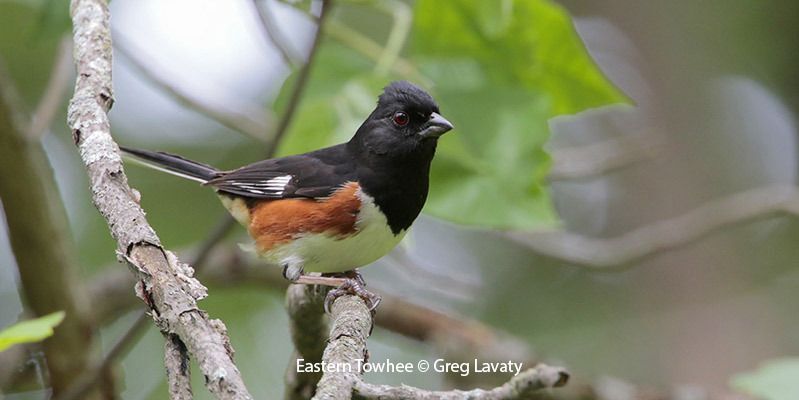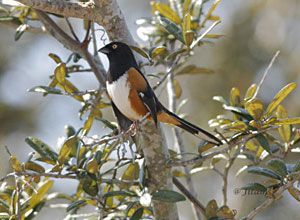
© Joanne Kamo
Eastern Towhee
Pipilo erythrophthalmus
Family: (Passerellidae) New World Sparrows
Preferred Habitat: Woodlands.
Seasonal Occurrence: Uncommon in winter.
Notes by Susan Billetdeaux: Towhees are super-sized members of the sparrow family. Eastern Towhees are almost as large as robins, and their coloring is reminiscent of a robin. They are most likely seen on the ground scratching for insects among dead leaves. Females are similar to males, but the male's black upperparts are replaced with a soft brown. The Eastern Towhee is most likely seen in winter in our area, but is difficult to locate within Houston's city limits. In 2011 Eastern Towhee sightings were much more numerous in the spring at High Island. Although there have been no recent reports of Eastern Towhees breeding on the peninsula, suitable nesting habitat is now plentiful at High Island, and it is hoped that they may start breeding there.
Profile by Sarah Lefoley: Some believe that the Eastern Towhee sounds like it’s singing “drink your tea.” The male Eastern Towhee has a black upper body, wings, rump and tail, two white tail spots, white belly, and rufous flanks. Female Eastern Towhees have brown upper bodies, rumps, wings, and tails instead of black ones, and lack tail spots.
This handsome bird has been spotted in Chambers, Harris, and Galveston Counties in winter 2020-21. Eastern Towhees winter in East Texas. You will often find them hopping around on the ground, and in shrubs looking for arthropods, snails, seeds, fruits, and soft, new leaves and buds. These birds are very methodical when foraging for food. They take their time looking for food, will scrape at the leaf litter, hop backwards, and then rush in to snatch their prey. Because they forage in shrubs and leaf litter on the ground, Eastern Towhees prefer habitat with dense undergrowth, and plenty of leaves, such as forest edges, and abandoned fields. They can also be found in the Appalachian Mountains at elevations below 6,000 feet.
Eastern Towhees are known to be a rather antisocial species. Towhees will often threaten other towhees who venture too close. Males will flash their white tail spots to scare off other males from their territories. They are just as unwelcoming to females as they are to males, at least at first. Male Eastern Towhees take a few days to warm up to females, eventually becoming inseparable companions. As the sole nest builders, female Eastern Towhees will build their nests in leaf litter on the ground. Sometimes, however, they will build their nests in vine tangles a few feet off of the ground.
Profile by Jon Piasecki: Eastern Towhees are a species of sparrow typically found throughout the eastern half of the United States. Their physical appearance is much different from many other “new world sparrows” that you may know. Adult males have a black head and back, with a white belly and orange-brown sides. Females and immatures have a brown head and back but have the same white belly and orange-brown sides as the adult males do. They breed throughout the northeastern and Great Lakes states and can winter as far south as the Gulf Coast of Texas. Some populations of Eastern Towhee are present in the southeastern U.S. year-round, and it is thought that these birds may not migrate.
Eastern Towhees are often seen and heard rummaging around in scrubby habitat. They prefer the edges of forests and overgrown fields where there is ample cover in the form of shrubs and thickets. The foraging behavior of towhees includes hopping along the ground, scratching at leaf litter hoping to stir up or uncover food items. Eastern Towhees will eat a variety of things such as spiders, centipedes, snails, seeds and even fruits such as blackberries.
During the breeding season, a female will enter a male’s territory and initially be chased off by the male. As time goes on, the male becomes less aggressive and becomes attentive to the female, following her around. Eastern Towhees typically nest on the ground but may also build nests in shrubs or tangles. The female builds the entire nest using bark, leaves, twigs, and occasionally fur. Female towhees lay between 2-6 eggs that take up to 2 weeks to hatch. Eastern Towhees may have up to 3 broods per year in some areas. While this species is very abundant, it is estimated that since 1966 Eastern Towhees have seen an overall decline of around 53% due to changes and loss of habitat.
Eastern Towhees have been seen this winter (2022-23) around the Houston area. Next time you are walking in a wooded or thick-brushy area and hear rustling in the leaf litter, be sure to take a quick look for flashes of orange and black!
-
Cornell Lab of Ornithology
-
Field Guide
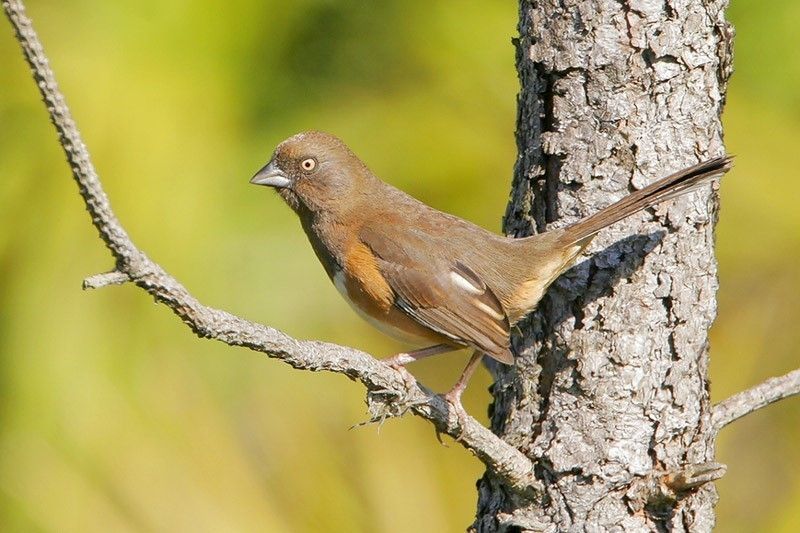
© Greg Lavaty, www.texastargetbirds.com
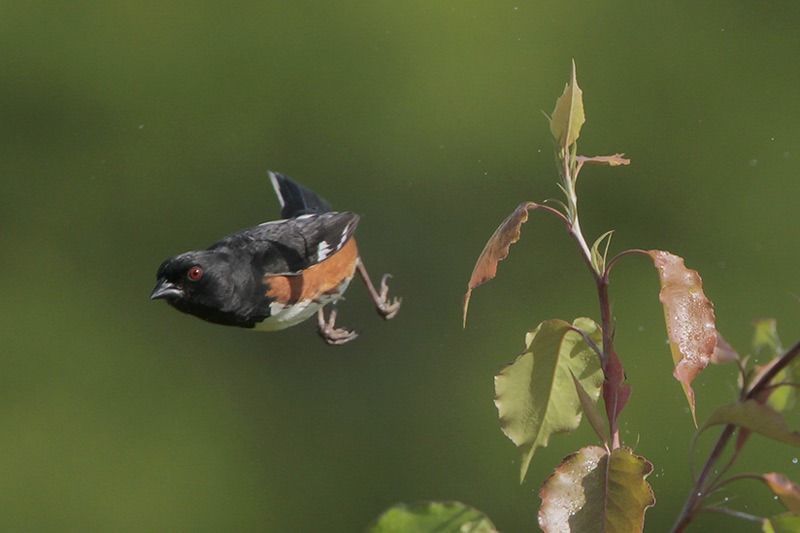
© Greg Lavaty, www.texastargetbirds.com
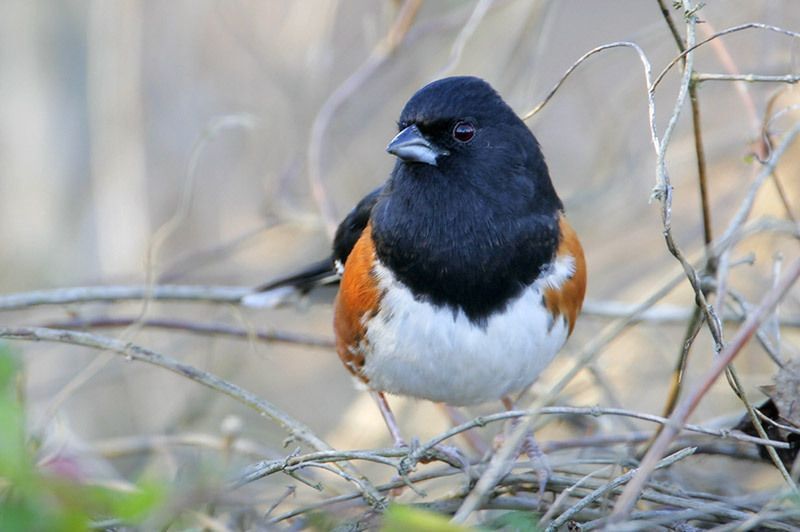
© Greg Lavaty, www.texastargetbirds.com
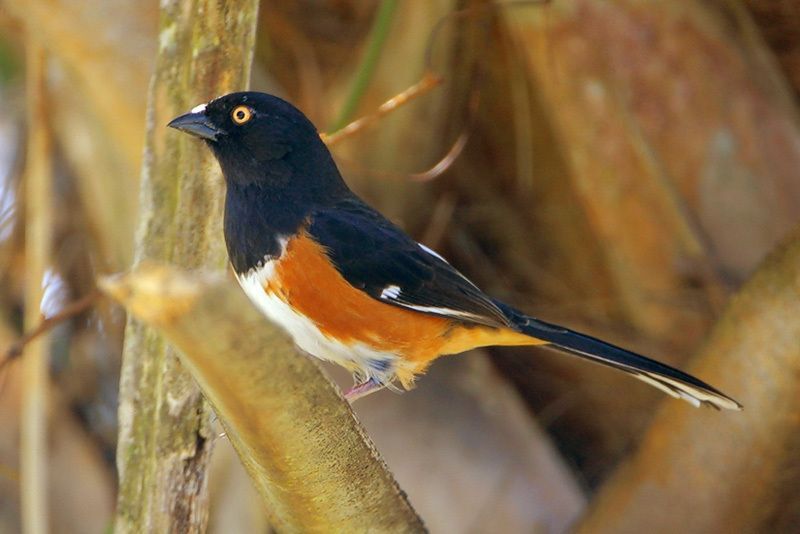
© Greg Lavaty, www.texastargetbirds.com

